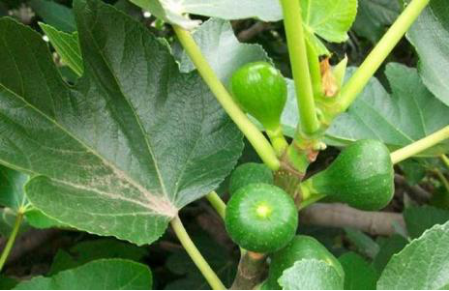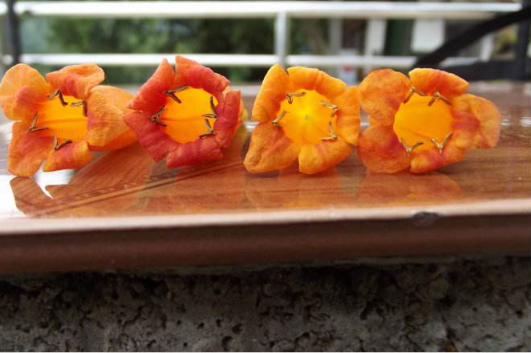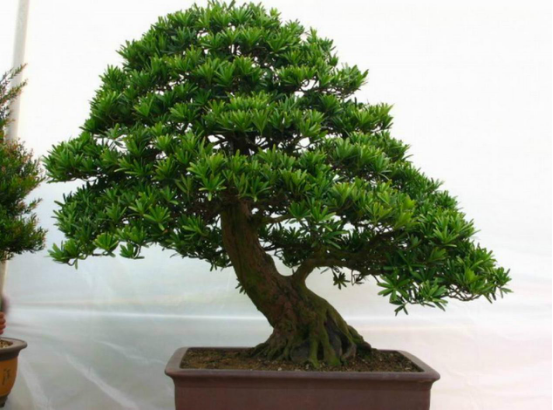How to grow figs
1. Container.
The root system of figs is relatively well developed. if they are not planted directly on the ground, they should choose a larger container for cultivation, and it is best to use that kind of large tile jar, and the space needed for its growth should be a little wider, preferably on the open balcony of the building or in the courtyard.
2. Soil.
Figs do not have very high requirements for soil, but the soil with high fertility and good permeability should be selected for the first planting. When planting or changing pots, you can add some mature livestock fertilizer rich in phosphorus and potassium. This can help figs survive and flourish and bear fruit as soon as possible.
3. Watering.
The watering of figs should be determined according to the growth of branches and leaves. During the Spring Festival, fig branches and leaves sprout and grow, watering less, and the basin soil should be slightly moist. As the temperature rises, the branches and leaves grow, and the figs in summer also have a fruit-hanging period, during which the amount of water should be increased and irrigated once every morning and evening to prevent water shortage. When the fruits are ripe and picked in autumn, we should water less at this time and prevent stagnant water on cloudy and rainy days.
4. Pruning.
The growth rate of figs is very fast, if the growth is too fast and too high, it will affect the beauty. At this time, we should pay attention to pruning and shaping, which is also conducive to normal maintenance. In general, it is necessary to prune the trunk when it grows to about 20 cm to promote the trunk to distribute side branches.

How to raise potted figs and the planting method of potted figs
The branches and leaves of potted figs are elegant and the tree shape is beautiful. it is a beautiful potted plant that can watch both leaves and fruits. Many people do not know how to raise potted figs. The editor of this article introduces the planting method of potted figs.
Planting methods of potted figs
The main results are as follows: 1. Fig root system is more developed, which needs larger container cultivation, generally using large tile tank planting, and needs a larger space growth environment, open-air balcony, balcony, courtyard and so on are more suitable for its growth.
2. Figs are not strict with the soil, but it is best to use fertile and breathable soil if potted. When planting or changing pots, add rotten cake fertilizer, chicken manure and other organic fertilizers rich in carbon, phosphorus and potassium, so that fig branches and leaves can flourish and hang fruit early.
3. The watering of potted figs can basically be determined according to the progress of their branches and leaves. When the branches and leaves germinate in spring, the amount of water should be less, and the basin soil should keep a certain humidity. As the branches and leaves grow slowly, the temperature rises gradually, figs also enter the fruit hanging period, at this time to increase the amount of water, sooner or later should be watered once, to keep the basin soil moist. If the watering is not timely, it is easy to produce branches and leaves malaise, fruit drop and other phenomena. After entering the autumn fruit ripening period, it is necessary to reduce the amount of water, too much water will cause the fruit to crack. In addition to controlling watering on cloudy and rainy days, we should also pay attention to prevent stagnant water in the basin so as to avoid waterlogging.
4. Fig shoots grow fast, so we should pay attention to pruning and shaping at ordinary times, especially potted figs. Too high trunk affects the appearance of figs, and it is troublesome to maintain them at ordinary times. Therefore, potted figs must be limited to a certain height and cannot be allowed to grow. The specific approach is to cut off the tip of the head when the trunk of the seedling grows to about 20 cm to promote its germination and branching. According to their own preferences, trimmed into a certain shape to improve the appreciation value.
Figs are not resistant to cold. Figs preserved outdoors should enter the house in time before and after Frosts Descent in late autumn. Indoor maintenance should be placed in the sunny, well-ventilated balcony living room and other places for maintenance. Figs enter the dormant period in winter and their growth tends to stagnate. At this time, the figs can be flexibly watered according to the indoor temperature. If the room temperature is higher, you can pour a little more water, but if you put it in a room with a room temperature of about 5 ℃, you should control the water and keep the basin soil dry as far as possible, so that you can safely survive the winter.
Figs are native to the coastal areas of Europe and the Mediterranean and Central Asia. They were introduced to China in the Western Han Dynasty. Figs have a long history of planting figs in Tarim Basin, where the fig fruit is sweet, nutritious and has the reputation of "fruit queen". The planting method of potted figs is introduced here. I hope it can help you to know more about how to raise potted figs.
How do you grow figs in pots? Planting methods of potted figs
Fig taste strong sweet, Shengjin quench thirst, with a unique fragrance, suitable for all ages, deeply loved. At the same time, the fig tree has luxuriant branches and elegant posture, has a very good ornamental value, and is one of the very good potted fruit trees. So, how to grow figs in pots? The following is to introduce the planting method of potted figs, let's have a look.
Picture: potted figs
I. Variety selection
At present, there are more than ten main varieties of figs in China, which can be divided into green fruit, red fruit, purple fruit and yellow fruit according to fruit color, and can be divided into summer fruit special variety, autumn fruit special variety and summer and autumn fruit variety according to fruit maturity. Potted figs should choose varieties with bright fruit color, large fruit and fruiting both in summer and autumn. Red and purple varieties can be selected: Japanese purple fruit, Boji red, Mashitofen, brown Turkey, yellow fruit varieties can be selected: Tanigawa, Jin Aofen, b1011, A42, Blanrek and so on.
2. Containers
The size and quality of the selected container determine the volume and growth potential of potted roots. Fig is a shallow root fruit tree, the root system is vertically distributed in the soil layer of 15-60 cm, and the horizontal extension range is large. Potted plants usually choose clay pots with a diameter of 40-50 cm and a depth of 25-30 cm.
Third, put on the basin at the right time
Figs do not have strict requirements on soil conditions, and they are most suitable for growth in neutral to alkaline soils with deep, fertile, loose and good permeability. Therefore, the pot soil can be made from 2 parts of sandy loam, 1 part of vermiculite, 1 part of barnyard manure, or 2 parts of garden soil, 2 parts of peat and 1-2 kg compound fertilizer. Before loading soil, the basin bottom leakage hole gasket is usually put on the basin in the middle and late March. Potted seedlings choose 1-year-old cuttage seedlings or 2-year-old and 1-year dry seedlings, and cut short the seedling roots with branch shears, especially to cut off the injured roots and cut roots, so as to prevent the root system from rotting after planting and stimulate the formation of new roots. In the process of planting, it is necessary to ensure that the root system is extended, close to the soil, and watered thoroughly after planting.
Picture: potted figs
IV. Fertilizer and water management
Apply diammonium phosphate or potassium dihydrogen phosphate once in early June, with a dosage of about 0.3 kg. After dissolving with water, pour the fertilizer liquid evenly into the basin. Compound fertilizer containing nitrogen, phosphorus, potassium and trace elements can be applied once in late August, with a dosage of about 0.5-1 kg. Paclobutrazol (pp333) was sprayed on leaves at the beginning of June by diluting paclobutrazol to 300-500x solution every 15 days for 2-3 times continuously, which could inhibit the growth of new shoots, shorten the distance between nodes, make branches strong and promote inflorescence differentiation and fruit development. Fig trees are resistant to drought and waterlogging, can be extensive in water management, watering should not be too much, especially in the fruit ripening period, too much water will cause serious fruit cracking.
5. Shaping and pruning
Fig trees have strong sprouting and branching ability, fast growth rate and large growth rate of new shoots. Potted figs should pay special attention to shaping and pruning. First, the trunk should be short, and the stem should be cut short at 15-20 cm after potting. The second is to control the vegetative growth and cultivate a compact tree with dense branches and short branches. Fig branches are divided into long branches, middle branches and short branches, all of which can bear fruit. Flower buds differentiate from the axils of the basal leaves of the petiole and develop into fruit. The length of long branches is more than 60 cm, with 20-30 nodes, the distance between nodes is 3.5-5 cm, the length of middle branches is 30-60 cm, generally 10-20 nodes, the distance between nodes is 2.5-3.5 cm, the length of short branches is less than 30 cm, the number of nodes is less than 10, and the distance between nodes is 2.0-3.0 cm. Usually, the terminal bud and the upper lateral bud develop into long branches, and the lower lateral buds develop into medium and short branches. In the peak growing season of fruit trees in May and June, pruning methods such as coring, wiping buds and pulling branches are used to control the vigorous growth of branches and cultivate short and medium-short branches with short and sturdy internodes; third, they can be shaped into a certain shape according to their own hobbies, so as to improve the artistic value of potted plants.
Picture: potted figs
VI. Light ventilation conditions
Potted figs should be placed in a place with good light and ventilation to ensure the normal photosynthesis and transpiration of hypertrophic leaves. It is best to put it where the light can reach directly, such as the sunny balcony and the sunny ground of the courtyard. If you plant figs on a closed balcony, you should always open the window and keep it ventilated. If figs are planted in the courtyard, the pots should be moved to the house in winter to prevent frost damage.
[conclusion] fig potted plants like warm and humid climate, are not resistant to cold and waterlogging, and need to be paid special attention in the process of conservation. The method of planting potted figs is introduced above. I hope it can help you!
- Prev

Propagation methods of Burning Flowers
Because of its multi-season flowering, burning flowers can be collected in many seasons, so sowing and reproduction is the main method of reproduction. When the pericarp changes from cyan to dark brown, the fruit is harvested and dried in a windless place. After the pericarp is cracked, the seeds are gently knocked out, and the seeds can be picked and sown in spring.
- Next

How to raise elm bonsai?
The conservation of elm bonsai has the following important factors: 1. Soil: Elm is a deciduous tree plant, and its vitality is very tenacious. Generally, it can be cultivated in fertile soil rich in humus, but the root system of the plant is not very well developed. although acidic and alkaline soil can adapt, it is best to deep ploughing.
Related
- Fuxing push coffee new agricultural production and marketing class: lack of small-scale processing plants
- Jujube rice field leisure farm deep ploughing Yilan for five years to create a space for organic food and play
- Nongyu Farm-A trial of organic papaya for brave women with advanced technology
- Four points for attention in the prevention and control of diseases and insect pests of edible fungi
- How to add nutrient solution to Edible Fungi
- Is there any good way to control edible fungus mites?
- Open Inoculation Technology of Edible Fungi
- Is there any clever way to use fertilizer for edible fungus in winter?
- What agents are used to kill the pathogens of edible fungi in the mushroom shed?
- Rapid drying of Edible Fungi

